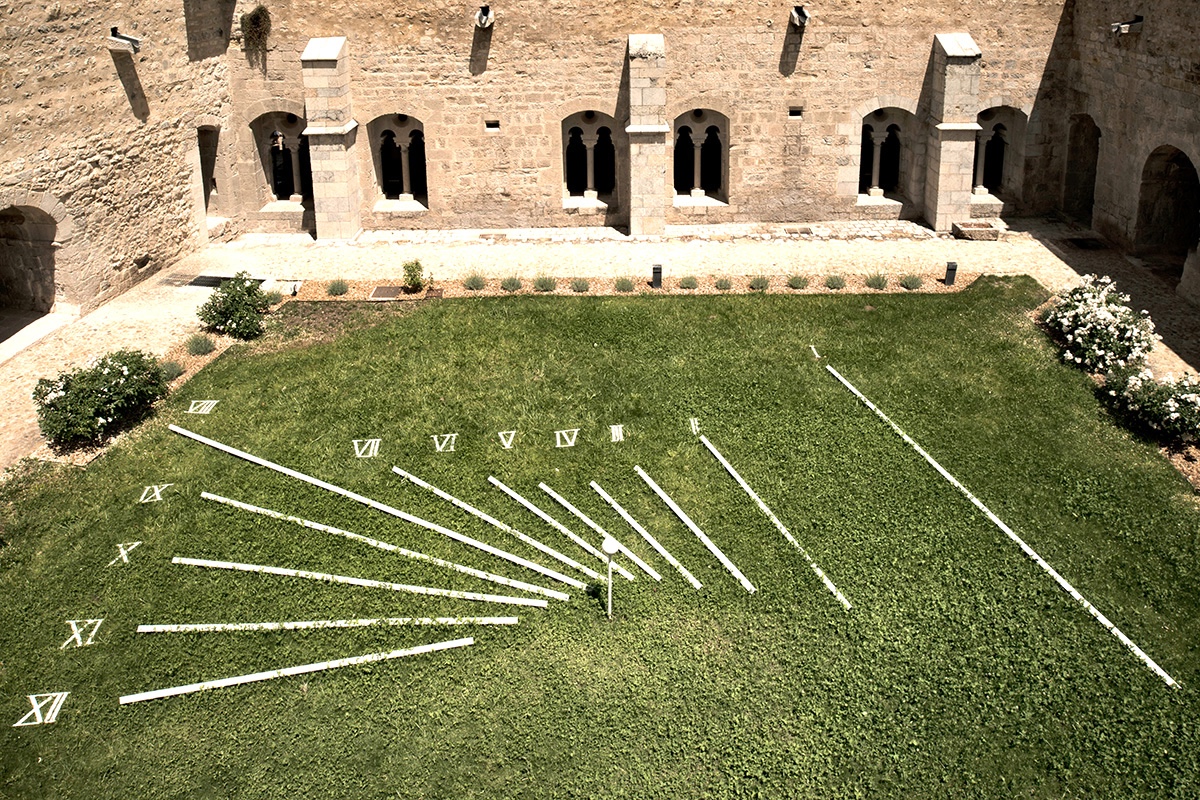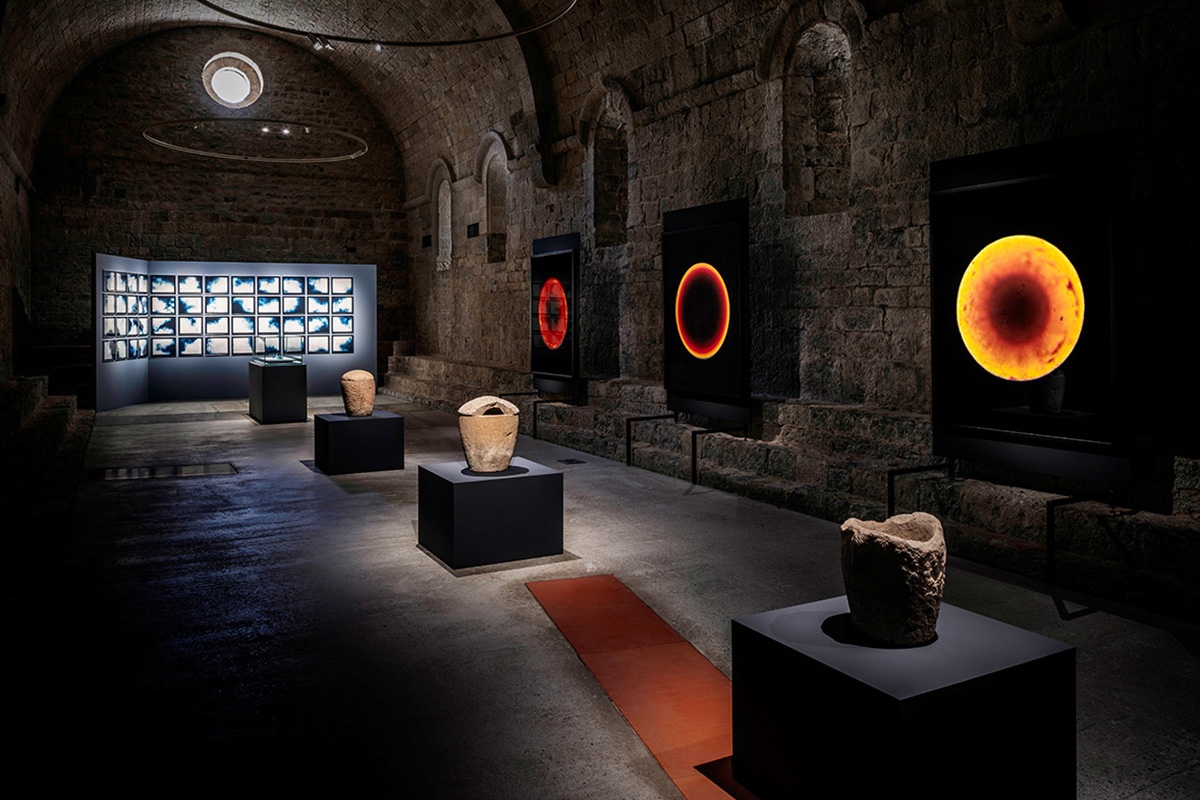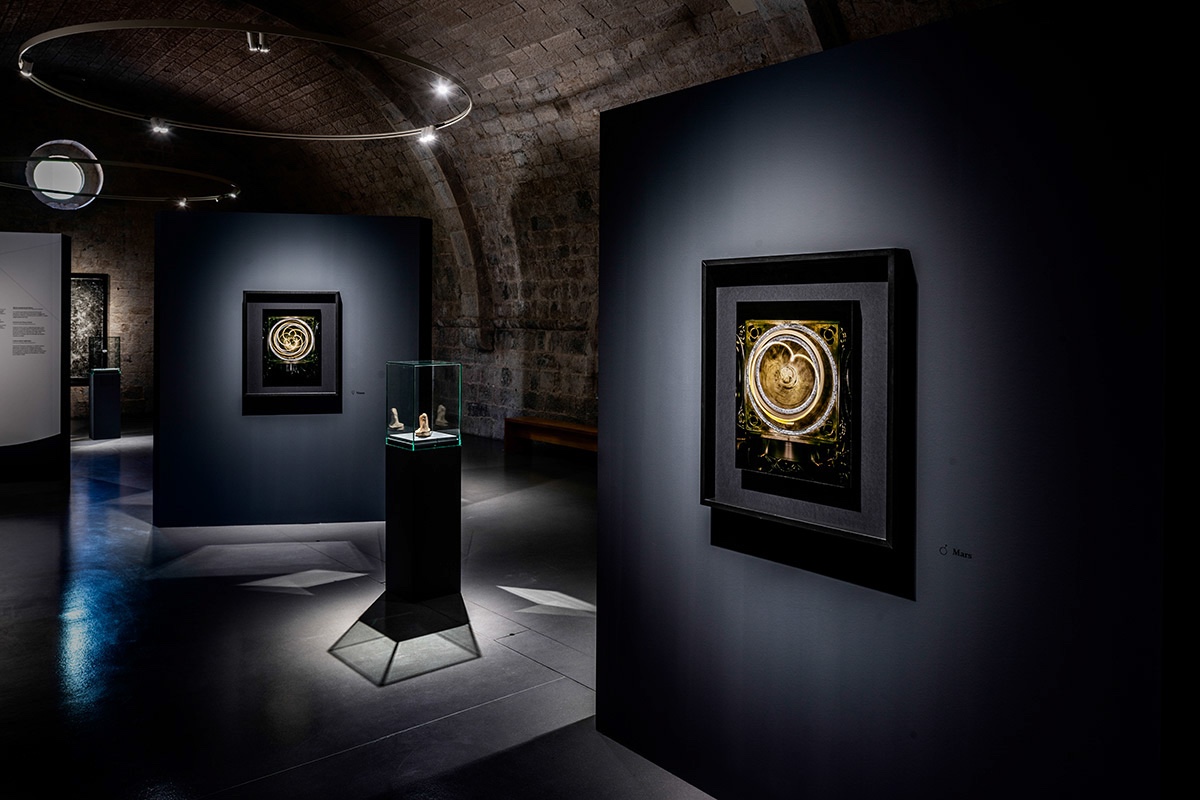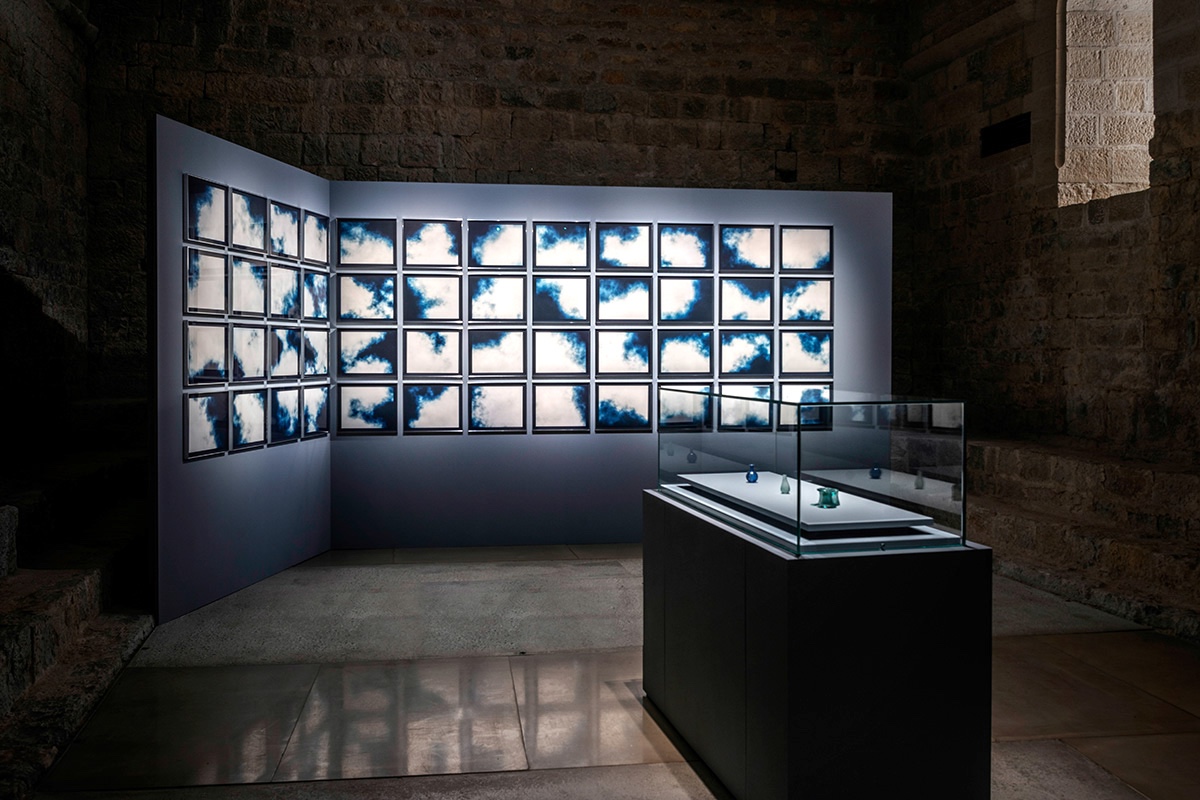




…loge du temps
Ode to Time
Abbaye de la Celle, Var, France
In the setting of a Romanesque abbey built on a Roman villa, an archaeological site that bears witness to twenty centuries of almost continuous occupation, Raphaël Dallaporta presents an exhibition divided into five spaces from spring to late summer. These works represent sensitive reflections on the passage of time and attempts at prediction. Winner of the Niépce Award in 2019, the photographer goes beyond simply capturing images, constantly exploring our relationship with the world and establishing links between history, science and the arts to examine the relationship between progress and our evolution.
At Abbaye de La Celle in the Var department, the exhibition entitled Ode to Time evokes the various means used at different times to apprehend time and attempt to predict our place on earth beyond the seasons. Although the artist uses photography as a means of dialogue with the sciences, the sometimes strange beauty of his images, reminiscent of familiar phenomena such as clouds, creates a dynamic work combining vivacity and theatrical solemnity. This balance blends harmoniously with the architecture of the Roman heritage and the archaeological remains of the preserved site.
In the courtyard, an interactive sculpture with the Sun takes the form of a sundial, marking time backwards by calculating specifically for the site the number of hours remaining until nightfall. As you enter the dormitory room, your gaze falls on a mirror dating back to Antiquity, which reflected the gaze of our predecessors over two thousand years ago. This is followed by the seven photographs in the Astrarium series (2020), resulting from the illumination and movement of an astronomical clock conceived in the Middle Ages and considered at the time to be one of the wonders of the world. The large print entitled Kircher (2015) pays homage to Athanase Kircher (1602-1680), the last Renaissance scholar, professor at the Roman College and a man of all learning. A selection of artefacts from recent archaeological digs interact with these photographs of trajectories, forming a metaphor for the non-linear advance of progress. In the refectory, the artist presents, opposite stone urns and glass vials from the department's archaeological collections, the Four Temperaments (2010) - abstractions of vital fluids, blood, yellow bile, black bile and phlegm, whose predominance, according to ancient medical theory, varies with the seasons. Secondly, the Covariance ensemble (2015), in which the illusion of clouds evolving in a cosmic sky is made up of 48 variations of a statistical function, derived from a contemporary study of models of chance. Through an opening between the refectory and the kitchen, an optical device identical to that used on the Apollo missions allows visitors to observe the reflection of their own eye on either side. This prism, used for the daily laser measurement of the Earth-Moon distance, accompanies the video creation Camera E-8 (2016), showing the first few seconds of the launch of the Saturn V rocket that propelled Man to the Moon for the first time in 1969, reminding us of what separates us from the Moon.
Through this visual narrative and its paradoxical praise, Raphaël Dallaporta illustrates in his own way the quote by Jorge Luis Borges in The Book of Sand: "If space is infinite, we are in any point of space. If time is infinite, we are in any point of time."
– Françoise Docquiert, exhibition curator